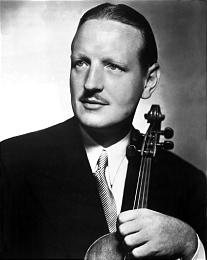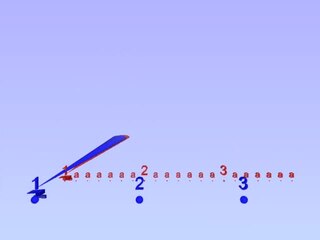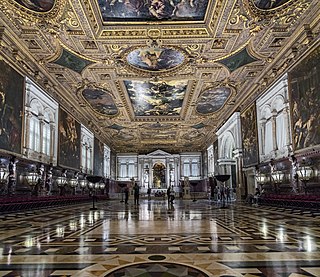
The Viola Concerto, Sz. 120, BB 128 was one of the last pieces Béla Bartók wrote. He began composing it while living in Saranac Lake, New York, in July 1945. It was commissioned by William Primrose, a respected violist who knew that Bartók could provide a challenging piece for him to perform. He said that Bartók should not "feel in any way proscribed by the apparent technical limitations of the instrument". Bartók was suffering the terminal stages of leukemia when he began writing the piece and left only sketches at the time of his death.

Mavra is a one-act comic opera composed by Igor Stravinsky, and one of the earliest works of Stravinsky's neo-classical period. The libretto, by Boris Kochno, is based on Alexander Pushkin's The Little House in Kolomna. Mavra is about 25 minutes long, and features two arias, a duet, and a quartet performed by its cast of four characters. The opera has been characterised as both an homage to Russian writers, and a satire of bourgeois manners and the Romeo and Juliet subgenre of romance. Philip Truman has also described the music as satirising 19th-century comic opera. The dedication on the score is to the memory of Pushkin, Glinka and Pyotr Ilyich Tchaikovsky.
The Concerto for Piano and Wind Instruments was written by Igor Stravinsky in Paris in 1923–24. This work was revised in 1950.
Igor Stravinsky's Concerto in D ("Basle") for string orchestra was composed in Hollywood between the beginning of 1946 and 8 August of the same year in response to a 1946 commission from Paul Sacher to celebrate the 20th anniversary of the Basler Kammerorchester , and for this reason is sometimes referred to as the "Basle" Concerto.

The Flood: A musical play (1962) is a short biblical drama by Igor Stravinsky on the story of Noah and the flood, originally conceived as a work for television. It contains singing, spoken dialogue, and ballet sequences. It is in Stravinsky's late, serial style.
Requiem Canticles is a 15-minute composition by Igor Stravinsky, for contralto and bass soli, chorus, and orchestra. Stravinsky completed the work in 1966, and it received its first performance that same year.

Septuple meter or septuple time is a meter with each bar divided into 7 notes of equal duration, usually 7
4 or 7
8. The stress pattern can be 2+2+3, 3+2+2, or occasionally 2+3+2, although a survey of certain forms of mostly American popular music suggests that 2+2+3 is the most common among these three in these styles.

Threni: id est Lamentationes Jeremiae Prophetae, usually referred to simply as Threni, is a musical setting by Igor Stravinsky of verses from the Book of Lamentations in the Latin of the Vulgate, for solo singers, chorus and orchestra. It is important among Stravinsky's compositions as his first and longest completely dodecaphonic work, but is not often performed. It has been described as "austere" but also as a "culminating point" in his career as an artist, "important both spiritually and stylistically" and "the most ambitious and structurally the most complex" of all his religious compositions, and even "among Stravinsky's greatest works".

The Octet for wind instruments is a chamber music composition by Igor Stravinsky, completed in 1923.
Variations: Aldous Huxley in memoriam is Igor Stravinsky's last major orchestral composition, written in 1963–64.
Fanfare for a New Theatre is a 1964 composition for two trumpets by Russian composer Igor Stravinsky. It was premiered on April 19, 1964, and published by Boosey & Hawkes.
Scherzo à la russe is a composition by Russian expatriate composer Igor Stravinsky. It was initially published by Chappell & Co. in 1945 and premiered in March 1946 by the San Francisco Symphony Orchestra, conducted by the composer himself. It was later published by Boosey & Hawkes.
"Epitaphium" is a short chamber-music composition by Igor Stravinsky, for flute, clarinet, and harp. The score was composed in 1959 and is inscribed in German, "Für das Grabmal des Prinzen Max Egon zu Fürstenberg". A performance last for less than two minutes.
Three Easy Pieces, also referred to by its original French title Trois pièces faciles, is a collection of pieces for four hands by Russian composer Igor Stravinsky. It was finished in 1915 and was published as a set in the winter of 1917.
The Septet for clarinet, bassoon, horn, piano, violin, viola and cello is a Chamber music composition by Igor Stravinsky. It was composed between July 1952 and February 1953, and the first performance took place at Dumbarton Oaks in Washington, D.C., on 23 January 1954. The score is dedicated to the Dumbarton Oaks Research Library and Collection. It consists of three movements, the first lacking a title, and the last lacking a number in the score. The work is influenced by twelve-tone technique, especially by the Wind Quintet, Op. 26, and the Suite for septet, Op. 29, composed by Arnold Schoenberg.
The Duet-Concertino for clarinet and bassoon, TrV 293, with string orchestra and harp in F major, was written by Richard Strauss in 1946/47 and premiered in 1948. It is the last purely instrumental work he wrote.

Ave Maria is a short motet for SATB chorus by Russian composer Igor Stravinsky.

The Two Sketches for a Sonata are parts of an unfinished piano work by Igor Stravinsky. He dated the manuscript 1966 and it is composed in his late twelve-tone style. It is his last attempt at original composition.








